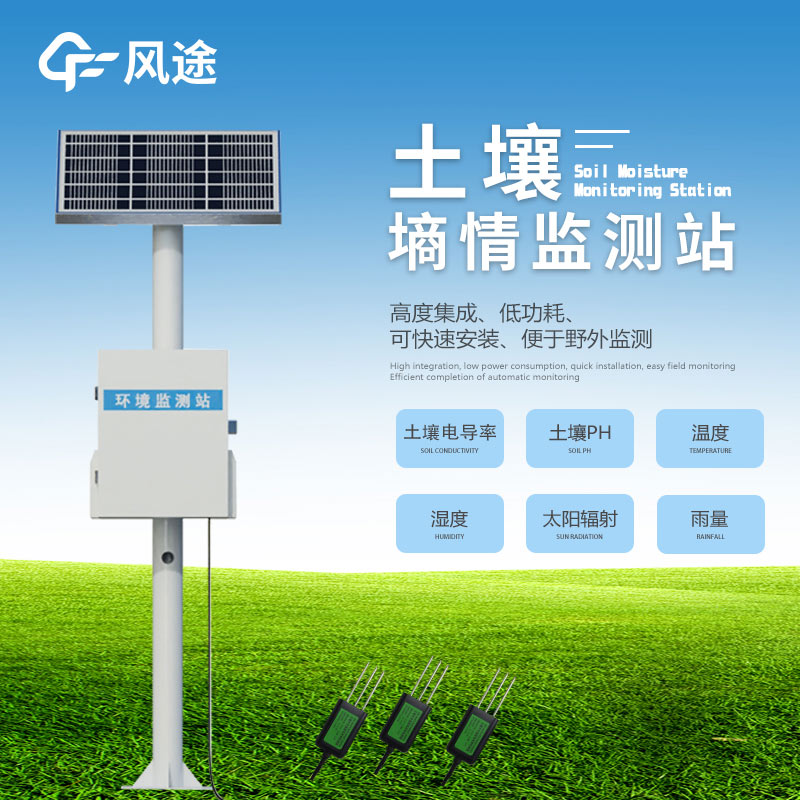Tianqiong Sensor IOT Technology Co., Ltd
Sales Manager:Ms. Emily Wang
Cel,Whatsapp,Wechat:+86 15898932201
Email:info@fengtutec.com
Add:No. 155 Optoelectronic Industry Accelerator, Gaoxin District, Weifang, Shandong, China

Sales Manager:Ms. Emily Wang
Cel,Whatsapp,Wechat:+86 15898932201
Email:info@fengtutec.com
Add:No. 155 Optoelectronic Industry Accelerator, Gaoxin District, Weifang, Shandong, China
time:2025-06-10 10:05:48 source:Weather Station viewed:156 time
In a certain farmland, the LED electronic display of "standard agrometeorological stations" real-time presents data such as soil water content, salinity, and ground temperature, providing key basis for farmers' scientific planting. The new-generation standard agrometeorological stations are equipped with sensors for multi-layer soil moisture and temperature, which can accurately obtain various soil information.
Soil moisture meters and wireless low-power soil environment sensors can real-time monitor soil pH value, electrical conductivity, and the temperature and humidity of different plough layers at 10cm, 20cm, and 30cm. After corn sowing in the smart agriculture demonstration zone of Area A, the sensor monitored a drop in the average water content at 20cm of the soil. Through big data analysis, it was determined that the corn field was in a moderately dry state. The smart agriculture center guided farmers to water and fight drought accordingly and activated automatic irrigation equipment to improve the corn emergence rate. In case of heavy rain, the soil moisture meter timely feedbacks data to remind farmers to drain water and reduce waterlogging losses.
The meteorological monitoring module of agrometeorological stations real-time monitors parameters such as air temperature, humidity, wind direction, wind speed, and rainfall, and analyzes them in combination with meteorological satellite cloud images. As soon as disaster weather approaches, it immediately issues warnings. The field meteorological stations continuously track changes in local micro-climates such as rainfall and atmospheric temperature to help farmers make early preparations for disaster prevention and loss reduction.
Pests and diseases are key factors affecting grain yield per unit area. Intelligent pest prediction and monitoring lights and plant pathogen spore traps use image recognition technology to analyze the types of diseases and pests and count their quantities, predicting the occurrence trend of pests and diseases. Before the occurrence of southern corn rust, technicians from the smart agriculture center formulated prevention and control plans through data collation and analysis, and activated plant protection drones to carry out the "one-spray multi-promotion" work, effectively alleviating the impact of pests and diseases on corn growth.
The digital intelligent field construction solution of Fengtu Technology not only real-time collects field environment information but also analyzes the growth situation according to the growth period of crops, achieving pest and disease monitoring and precise pesticide application. Through precise monitoring and data analysis of soil, meteorology, pests and diseases, agrometeorological stations comprehensively help improve the yield per unit area of major food crops and are an important support for promoting agricultural modernization and ensuring food security.

The working principle of Ground Penetrating Radar (GPR) is based on the propagation characteristics of electromagnetic waves. It emits high-frequency electromagnetic waves into the ground. When these waves propagate through underground media, once they encounter interfaces between different media—s...
Agricultural production is closely related to weather changes, and weather conditions play a decisive role in the growth, development, and final yield of crops. Torrential rains may trigger floods, submerge farmland, and damage crops. Droughts, on the other hand, can lead to insufficient soil moistu...
The petrochemical production process involves a large number of flammable and explosive chemical substances, such as crude oil, gasoline, ethylene, and so on. During storage, transportation, and production, these substances can easily trigger explosions and fires once they encounter an ignition sour...
Handheld Weather Station FT-SQ8+ is a "meteorological monitoring expert" trusted by numerous users.Equipped with a 3.5-inch LCD screen, the FT-SQ8+ can clearly display a wealth of elements such as wind speed, wind direction, average wind speed, temperature, humidity, atmospher...